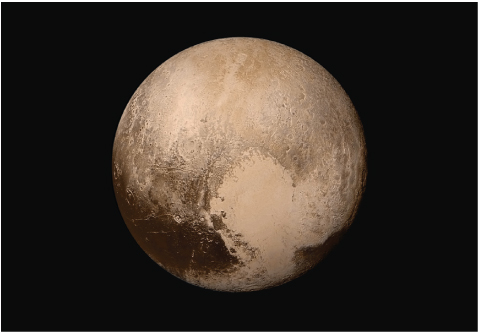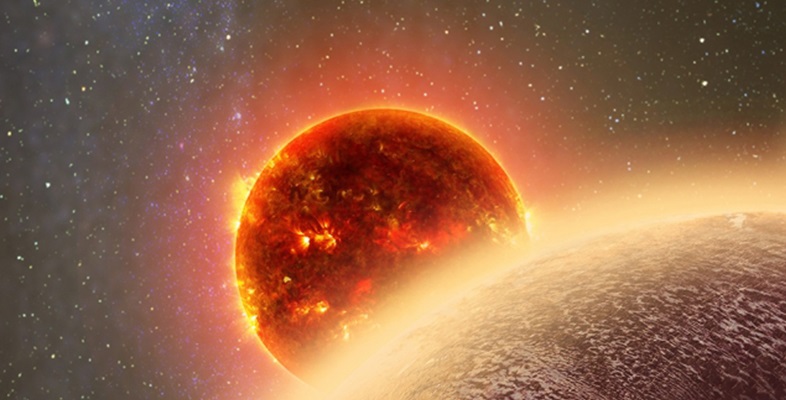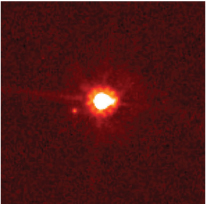1.3 Planets and dwarf planets
In Section 1.2 you looked at ten objects in our Solar System. How many of these objects do you think are planets? In 2015 one of the objects made the headlines. After a journey that lasted a decade, the NASA New Horizons spacecraft finally got up close and personal with Pluto, sending back striking images of its surface, including a huge, heart-shaped area (Figure 9). But, despite all the fuss, Pluto hasn’t been considered to be a planet since 2006. So what is it that makes a planet, and why did Pluto lose that status?

In 2005, another object was discovered similar in size to Pluto but much further away. It was named Eris (Figure 10) after the Greek goddess of discord. Eris and several other objects found at the same time encouraged astronomers to rethink the definition of a planet.

